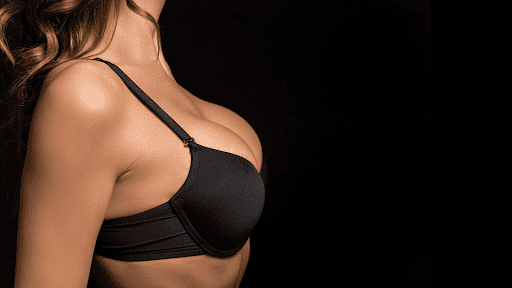


Most breasts are asymmetrical to varying degrees.
During your examination with Dr Rory detailed measurements of your breast will be performed and a mathematical analysis will demonstrate any significant asymmetries. Often these are best seen in standardized clinical photographs.
Asymmetries of the breast can describe differences in volume (size), overall shape, nipple and areolar position and the position of the breast on the chest wall (including the breast fold). This can occur as a result of either overdevelopment or underdevelopment of one of the breasts or from previous surgery.
Having a normally shaped but underdeveloped breast which is smaller than the other is the commonest form of asymmetry. This is known as breast hypoplasia. In this instance, the smaller breast can be surgically enhanced with the surgical insertion of a Motiva cohesive gel silicone breast implant or with fat taken from another part of the body following liposuction. Often a combination of these procedures is used.
Most breasts are asymmetrical to varying degrees.
During your examination with Dr Rory detailed measurements of your breast will be performed and a mathematical analysis will demonstrate any significant asymmetries. Often these are best seen in standardized clinical photographs.
Asymmetries of the breast can describe differences in volume (size), overall shape, nipple and areolar position and the position of the breast on the chest wall (including the breast fold). This can occur as a result of either overdevelopment or underdevelopment of one of the breasts or from previous surgery.
Having a normally shaped but underdeveloped breast which is smaller than the other is the commonest form of asymmetry. This is known as breast hypoplasia. In this instance, the smaller breast can be surgically enhanced with the surgical insertion of a Motiva cohesive gel silicone breast implant or with fat taken from another part of the body following liposuction. Often a combination of these procedures is used.
One breast may also be normally shaped but overdeveloped than the other breast. This is called breast hyperplasia. In order to create symmetry, the larger breast can be surgically reduced in a breast reduction.
Another relatively common developmental problem encountered in women is that of a tuberous breast. Typically, patients have one or both breasts which have a drooping tube-like shape, with a small breast base on the chest and an unusually large areolar. The treatment of this condition involves surgical insertion of a Motiva cohesive gel silicone breast implant and to internally release the tight bands that cause the tube like shape. In addition, the areolar size is reduced and the nipple and areolar position may have to be lifted (breast lift).
Finally, a more profound developmental problem involves complete failure of breast development but the areola and nipple are present, known as Amazia. If the arealor and nipple also fail to develop this is known as Amastia. These two conditions may be associated with Poland syndrome which involves lack of the chest muscle, ribs and also chest bone with some hand abnormalities.
Treatment of this group of conditions involves the surgical insertion of a Motiva cohesive gel silicone breast implant or with fat taken from another part of the body following liposuction. Often a combination of these procedures is used.
In reality, the treatment correction of asymmetries is planned on an individual basis.